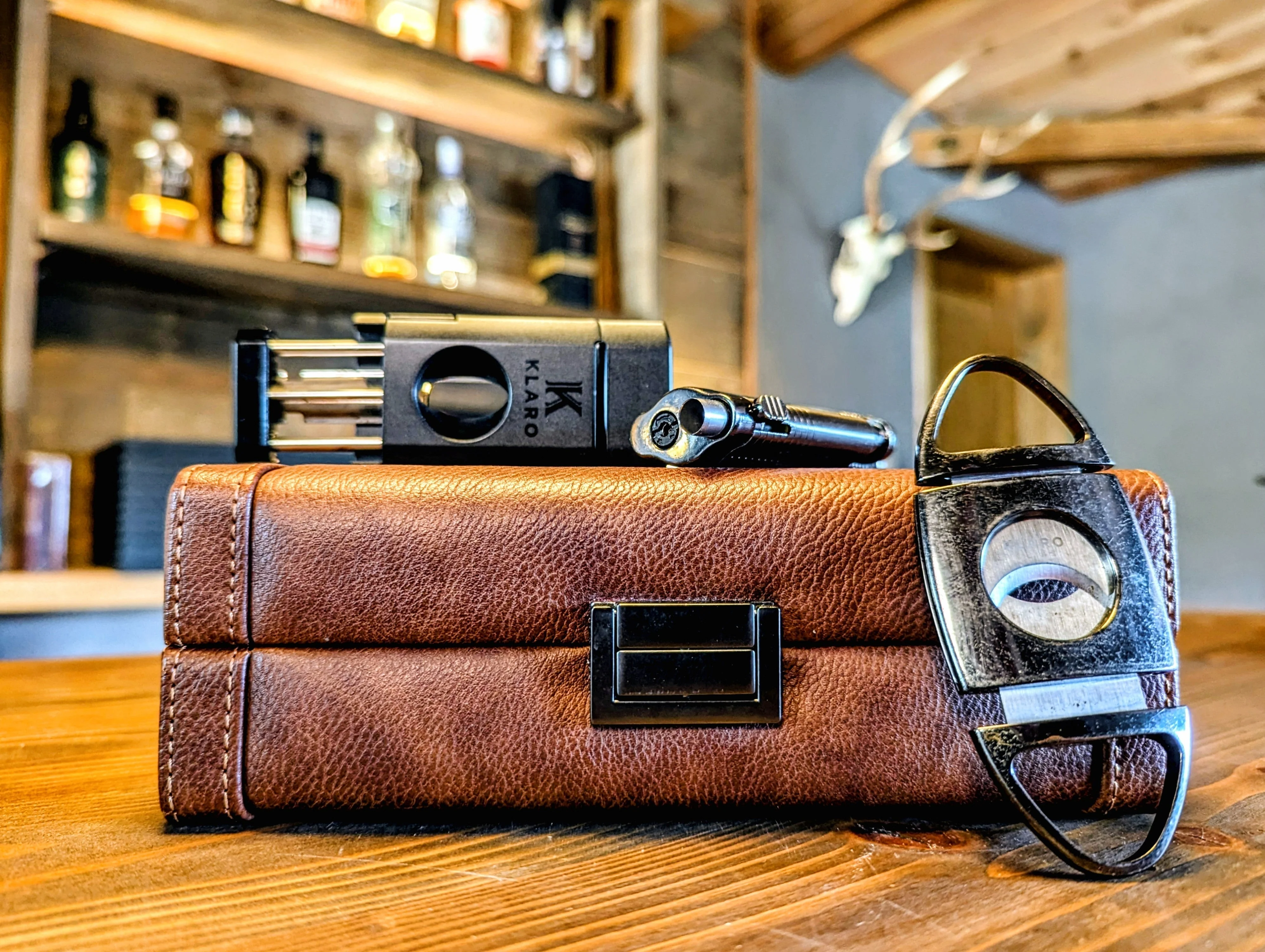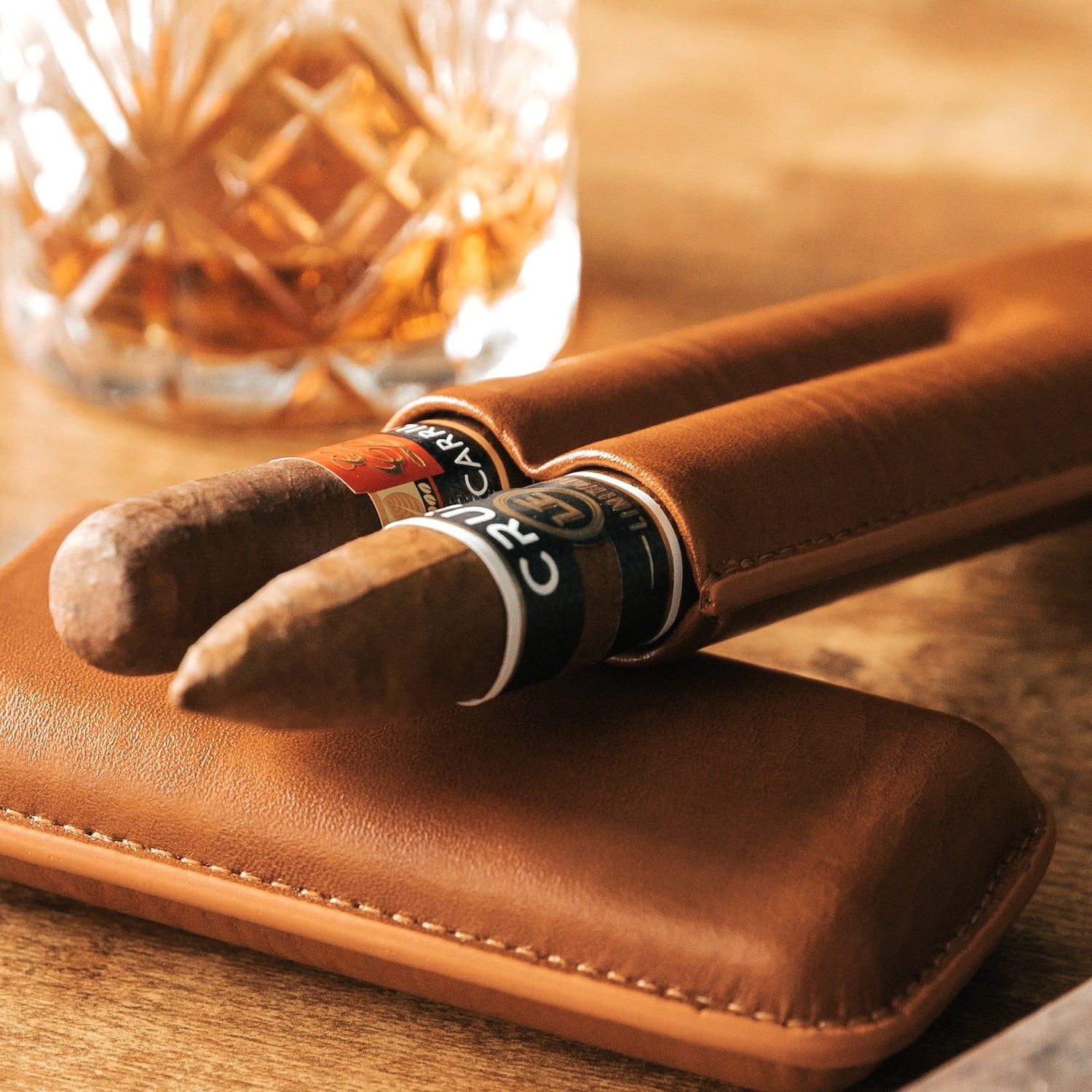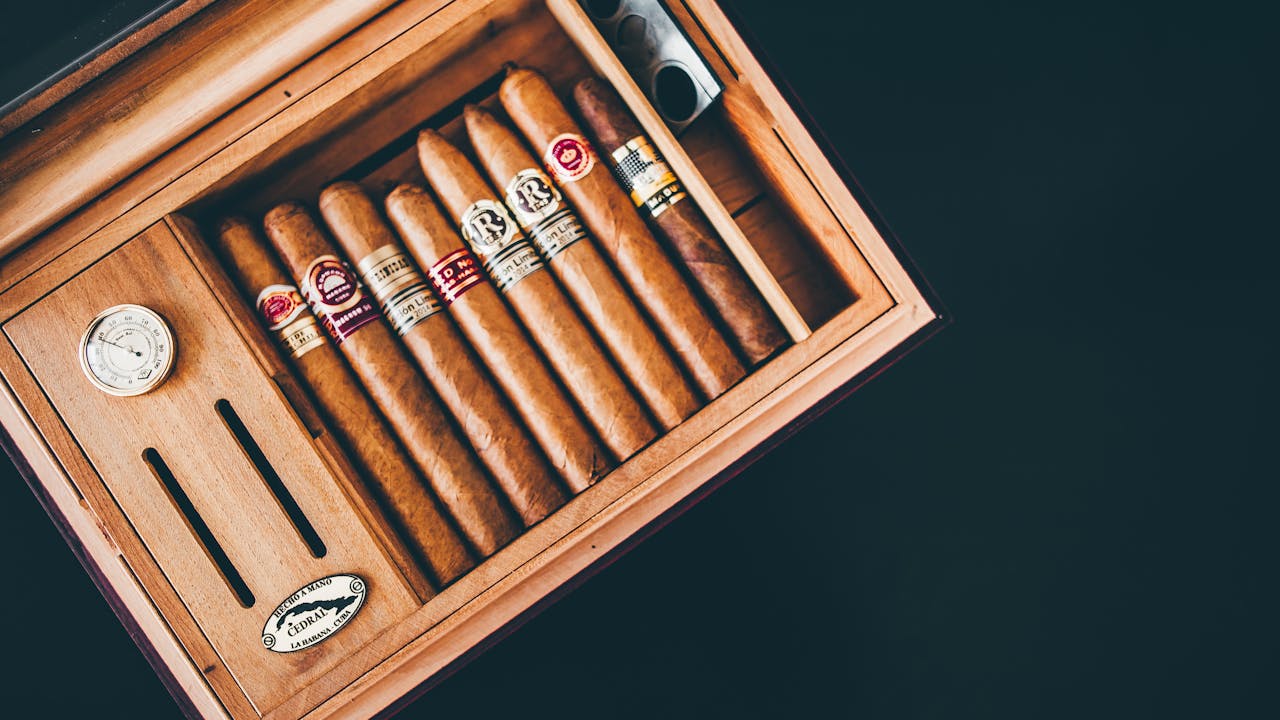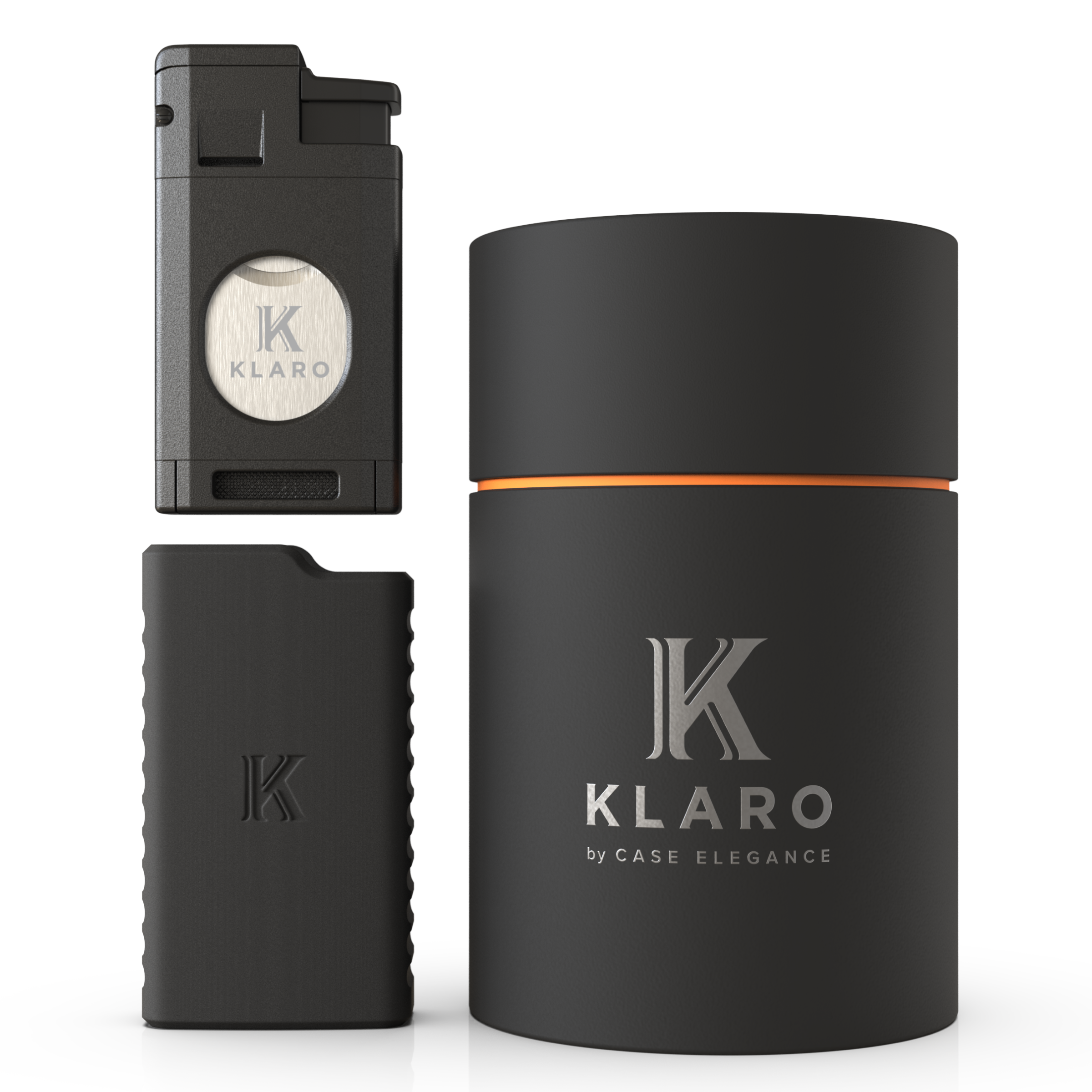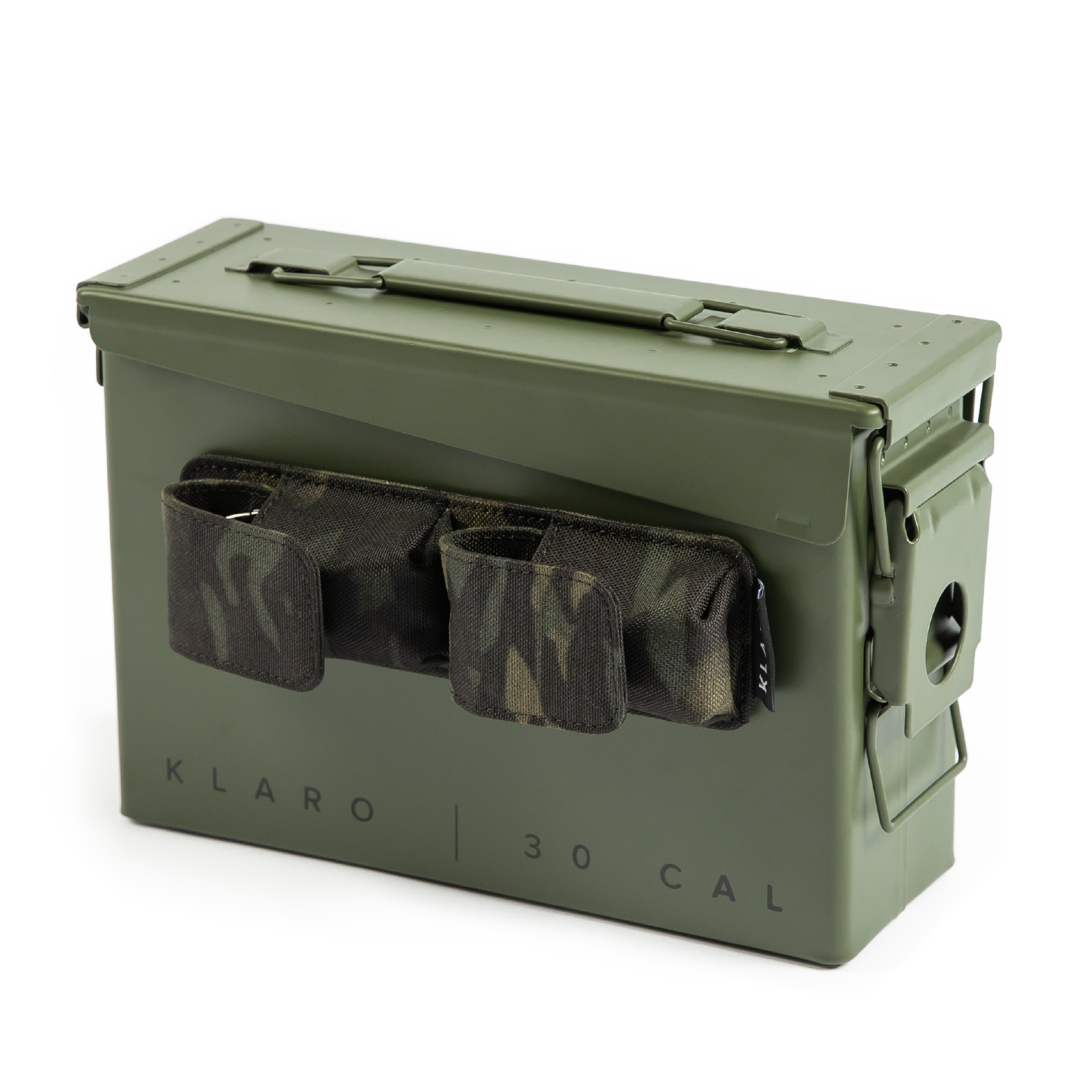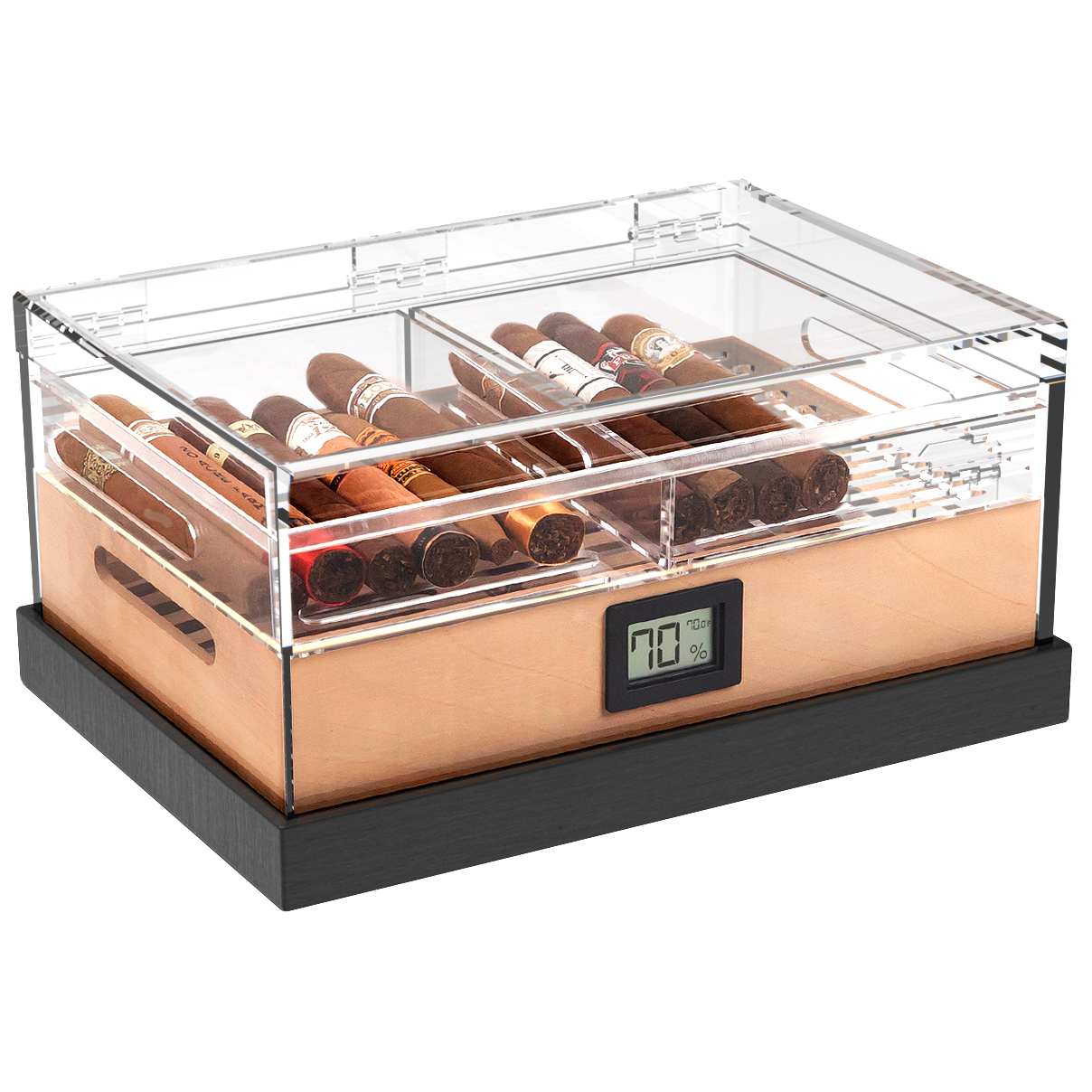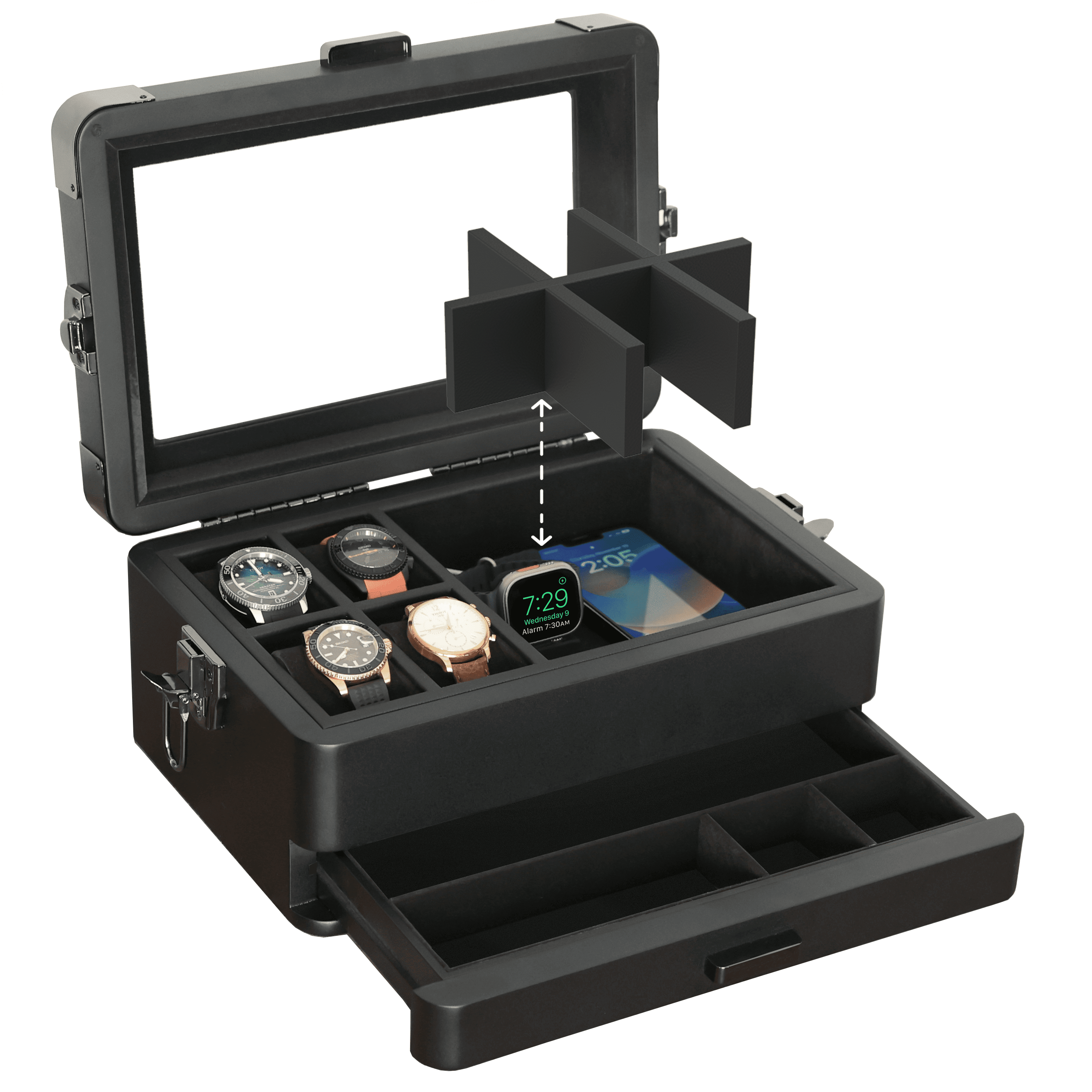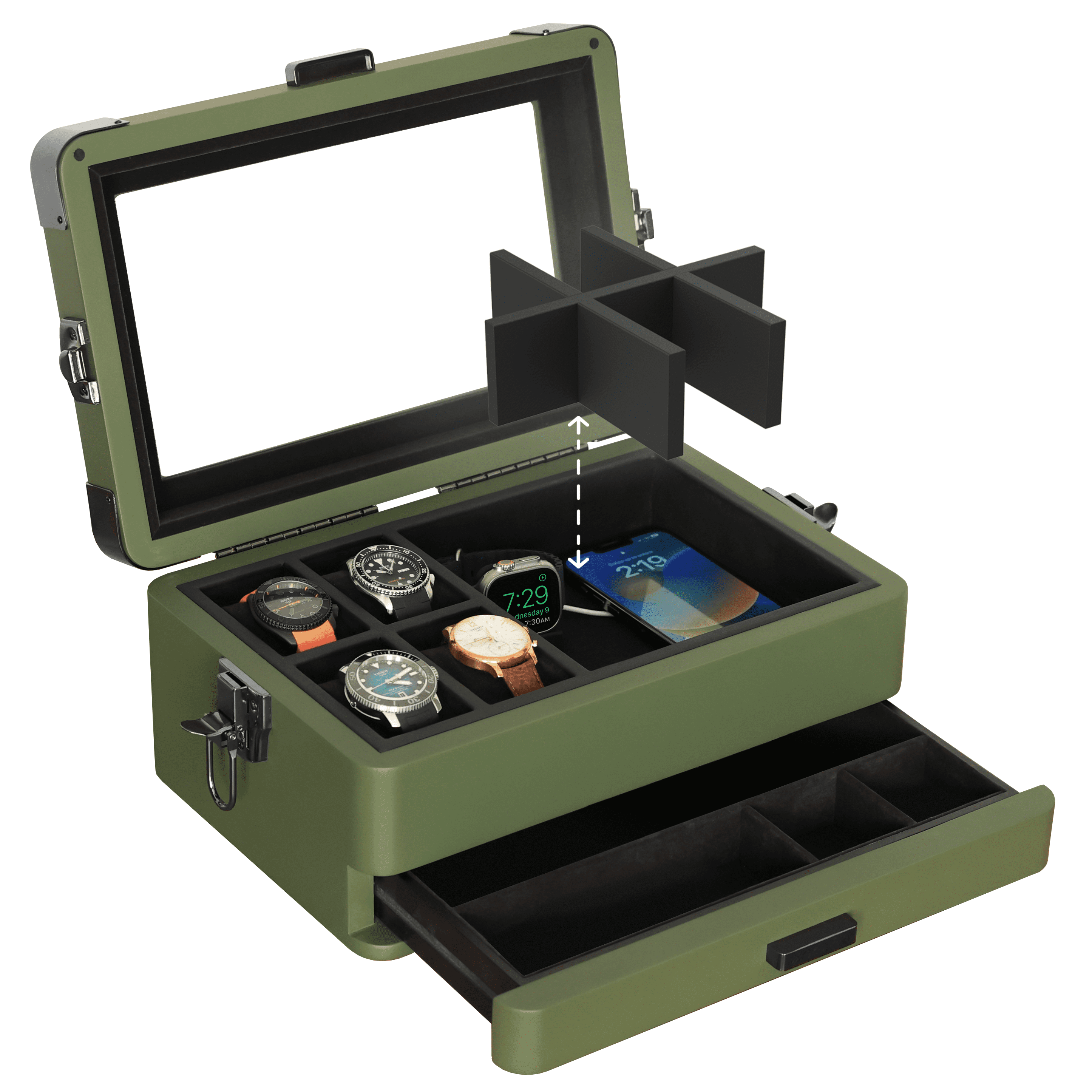A Guide on How to Light a Cigar
Cigar smoking became popular in America in the late 19th century, coincidentally in the same century as the advent of the common match and the introduction of ferrocerium, a hot and bright alloy that produces hot sparks that led to the popularity of the modern-day lighter. Today, the method of lighting a cigar is arguably as important as the cigar itself. So let’s discuss the many methodologies in our guide on how to light a cigar.
And just why is it such a big deal? How you light a cigar can largely determine how well the different tobaccos burn and, therefore, how well you experience the cigar’s nuanced flavors. Let’s start by understanding how a cigar is formed.
Understanding Cigar Anatomy
Cigars are made of three main components: the wrapper, binder, and filler. The filler is the innermost component, made of shredded tobacco leaves. The binder comes next, made of tobacco that keeps the filler in place and forms more of the cigar’s body. And, finally, there’s the wrapper, which is typically made of whole tobacco leaves that wrap around the entire cigar.
Three components, three different materials that need to burn uniformly. This is one of the main “problems” to solve when lighting a cigar, to ensure these each burn at approximately the same time. And nothing is more important for this than starting off with an even burn.

Types of Cigar Lighters
Matches, flick lighters, wooden spills, butane
While some may consider them antiquated, matches remain a popular form of lighting cigars. In fact, wooden spills, which are typically made of cedar and do not have the same combustible head as a traditional match, are the recommended choice among many expert cigar smokers, citing their neutrality in affecting the cigar’s taste.
But most cigar smokers use what’s called a torch lighter, which uses pressurized butane to create an ultra-hot flame that burns evenly and forcefully across the foot of your cigar, ensuring an even start to smoking your cigar. Consider the torch lighter the upgraded version of the butane Zippo lighter, which uses similar unpressurized fuel that creates a waffling flame.
There are many types of torch lighters, each mostly varying by how many jets are included. They arguably achieve a similar goal, but single jet torch lighters are especially good for spot lighting, which is used when correcting an uneven burn.
Pre-Lighting Preparation
A proper light doesn’t
You can generally inspect a cigar to identify any major problems you may face once lit and smoked. Cracking is an indication the cigar is too dry, which will burn unevenly and too quickly (and why a humidor is so important). You can also pinch the cigar lightly to feel for any softness that may be a result of uneven packing. Softness may also indicate over-humidification, which will result in an uneven burn.
Look for what are called “runners,” or veins in the wrapper that may act as a fuse and cause a quick, uneven burn once started. Look for these at the cigar shop,
How you cut the cigar will determine its draw. “Draw” is the ease with which air can be drawn from the foot of the cigar into the cut.

Choosing the Right Lighter
Smokers prefer different lighters for different reasons. Cedar spills to avoid compromising the cigar’s natural flavors. Single jet torch lighters for touch-ups. Triple-jet torch lighters for an even, thorough burn. Flick lighters because you can find them anywhere. Logically, some make more sense than others. But to each their own.
We encourage you to experiment with many different types of lighting devices to develop your preferences. You will learn how to light a cigar primarily through trial and error. But we recommend learning about the various types of torch lighters to learn why some have better properties than others.
Regarding lighter brands, we are especially happy with what comes from Xikar. They offer quality materials, excellent construction, and continue to innovate in the right direction with their torch lighters. You can read a little more about why we like Xikar lighters here.
Proper Technique for Lighting
Many cigar smokers recommend toasting the foot of the cigar, which preps the tobacco to burn evenly and gradually. Toasting begins the lighting of all three cigar components — wrapper, binder, filler — all at the same time. Otherwise, your filler would burn first and hottest. Toast the cigar without drawing in any oxygen to ensure this even burn across all layers.
Next, once you start drawing air through the cigar and effectively drawing the flame into the cigar, rotate the cigar to ensure an even burn. Keep rotating as you draw on the cigar, removing it from your mouth occasionally to check on the cherry and identify that all components are being lit.

Avoiding Common Mistakes
The goal when lighting a cigar is to create an even burn across the foot of the cigar that ensures all components are lit well and uniformly. Light one side more so than another, and the rest of the cigar will burn unevenly. But you must also accomplish an even burn without scorching the tobacco.
Scorching occurs when too much heat is applied to directly and burns the tobacco in a way to cause a bitter, acrid taste. This is why some cigar aficionados avoid torch lighters, because they burn such a hot and direct flame and can cause scorching.
A cedar spill can help to draw in the flame without scorching the tobacco, just ensure you are creating an even burn. Canoeing occurs when one side of the cigar burns faster than the other. This can happen due to poor cigar construction, but most often it is the result of failing to achieve an even burn across the entire foot of the cigar when you first light it.
Lighting in Different Environments
We smoke cigars in a lot of different environments. While cigars have a reputation for occurring at weddings, bachelor parties, and other special events — many of which are outside — cigars are also commonly found among fishers, or at the golf course. Again, outside.
Indoors, at a cigar bar, you shouldn’t have much problem lighting a cigar with a sp
But outdoors? At the least, wind can be nuisance. At its worst, wind can prevent you from lighting a cigar completely if you are relying on a flick lighter, a match, or a Zippo. In these conditions, a torch lighter reigns supreme. It’s never a bad idea to keep one around for this reason.

Understanding Flavor Impact
We mentioned the dangers of scorching your tobacco — how it can lead to an acrid, bitter taste. But how hard you draw on a cigar can also impact flavor. Draw too much, and you can burn the tobacco too quickly and produce this same scorching effect. This also brings very hot smoke into your mouth, which can alter the experience negatively.
The best way is to gently draw the smoke through the cigar to experience its nuances. The further the cigar smokes down, the more careful you will need to be with how hard you draw on the cigar.
Storing Lighters and Matches
If you use a cedar spill or matches to light your cigars, store them in a cool dry place without an abundance of humidity. You needn’t worry as much about your torch lighters, as long as they are out of the sun or high heat.
Troubleshooting Guide
- Fixing Uneven Burns
- Reviving a Dying Cigar
Exploring Alternative Lighting Methods
We’ve mentioned cedar spills already — as well as the many different types of torch lighters — but you will likely continue to run into new and alternative forms of lighting a cigar. Most recently, electric lighters are becoming popular among some crowds.
Feel free to experiment and explore with alternative lighting methods. (Hey, a candlelight certainly has surely been used at one time or another). Just gauge the effectiveness on the final result: how evenly and consistently your cigar burns, how well you can experience the nuanced flavors of the tobacco.
Safety Measures While Lighting
It should go without saying that any time you are using a li
Advantages of Proper Lighting
The conversation around how to light a cigar properly may seem complicated. But getting it right is important. We all know by now that investing in good cigars is worth it — an hour or two of a quality experience. But they come at a price, and you don’t want to risk ruining a perfectly good cigar (and experience) because it was lit incorrectly.
The better you get at lighting cigars, the more you’ll know a good light when you get one due to both your technique and the quality of the cigar. It’s an experience worth pursuing.
Lighting Etiquette
If you’ve ever avoided getting into cigars because you’re worried about doing it incorrectly, you can (thankfully) leave that worry at the door. Everyone was a newbie at one time, and now the most important thing you can do is ask questions and keep trying different cigars and techniques.
What’s the etiquette for lighting cigars? Try your best. Don’t feel embarrassed to ask questions. If anything, make sure you’re trying it on your own and developing your own preferences.
The Art of Re-Lighting
A cigar occasionally requires a re-light if it begins to burn unevenly or dies out completley. Usually, it’s a sign of weakness in the cigar itself. Or it’s a result of an uneven burn, which requires a spot-light. But you may also need to re-light a cigar if you have stopped paying attention and let the cigar burn out.
Spot lighting lights a side or portion of the cigar that has fallen behind the other burn level or has gone out completely. Simply take your torch lighter to that spot to reignite and catch up the burn.
Summary
- Explore lots of different ways to light your cigars (and re-light, and spot light). You’ll discover different ways that appeal to you most. But give credence to the tried and true ways, including using a cedar spill and different types of torch lighters.
- The end goal is to light the tobacco in a way that it burns evenly and does not alter or affect the tobacco’s nuanced flavors. Be weary of any lighting method that causes scorching, tunneling, or canoeing.
- Done correctly, lighting your cigar will lead to a more enjoyable smoking experience. The best smoking experiences are achieved with a g


